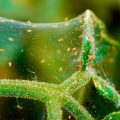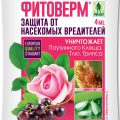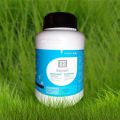Spider mites on houseplants - a common problem among gardeners. This pest affects almost all plants and dwells everywhere, except Antarctica. If not timely start to fight it, it is possible to lose all colors. Spider mites live in large colonies. They are organized under the dry leaves, who remain in the pot, or lumps of soil, also settle on the reverse side of leaves.
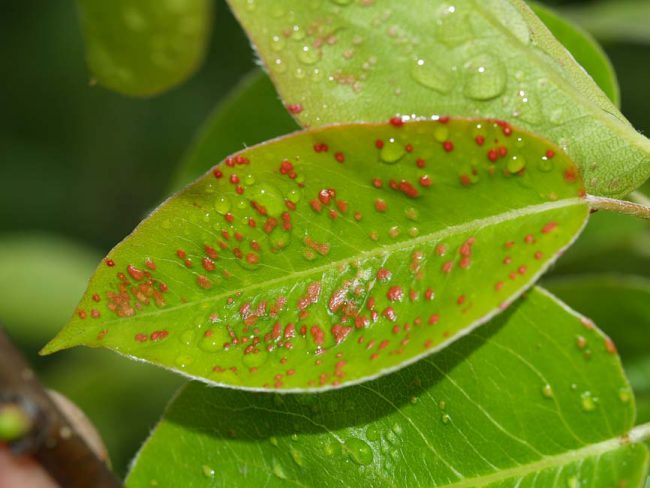
signs of
Detect spider mites on plants is quite simple. On leaves there are many bright spots. If a large colony, the flower is covered with a thin cobweb and quickly begins to dry.
note! The stores often sell plants, already affected spider mites, so they should be placed in quarantine for at least 14 days.
Spider mite is of several types:
- ordinary tick. Distributed by the bottom of the leaves and settles on the tips of young shoots. When a large population of pests can crawl on the windowsill, pawing at neighboring plants. The favorite colors are the common spider mite balsams, Dracaena, roses, fikusы and Fuchsia. They appear small white webs and yellow spots on the leaf.
- red mite. Active reproduction occurs at a high temperature. damage balsams, lemons and orchids.
- The false tick. It has a very small size, so it is difficult to detect with the naked eye. Since he did not weave the web, his notice in the event, when the flower begins to die.
- Atlantic mite. Begins actively proliferate at high humidity. It applies to citrus and exotic palm trees, but may move to other plants.
- cyclamen mite. It affects not only the leaves, but the tubers of plants. He loves these flowers, how pelargonate, violets, chrysanthemums and cyclamen.
- clover mites. It eats away at the whole plant moves, which is brown rot. Distributed by orchid, peperomiya and rubber plants.
- Cactus flat mite. The signs of destruction are white or yellow spots on the leaves broken. Striking exotic plants.
- broad mite. New colonies on the leaves of affected plants appear every 3-4 day. They can see the red dots of dust and cobwebs. Pest spreads on cacti, citrus, ficus, anthurium and senpolii.
Important! Spider mites do not only harm the plant, but also can carry various diseases, including, gray rot.
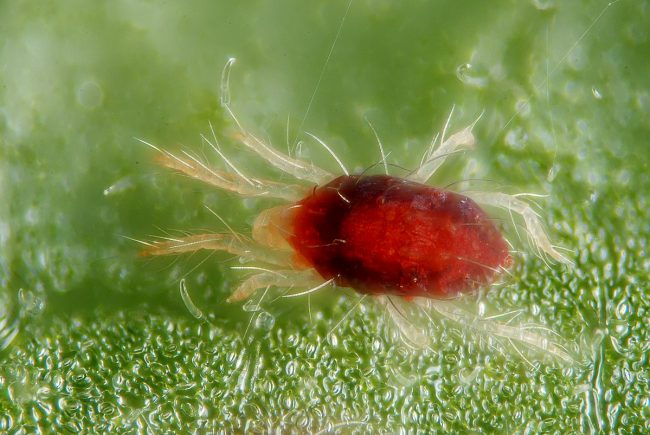
How to get rid of the spider mite chemicals?
According to the feedback of experienced gardeners and gardeners, the most effective chemicals against spider mites are:
- aktellik. Broad-spectrum insecticide. According to chemical classification, organophosphorus compound is. The active component acts pirimiphos-methyl. The protective effect persists until 14 days. Permitted to be used in combination with other pesticides.
- be able to. Universal insecticides malathion and cypermethrin. enough 1 processing parasiticides colony. The maximum protective effect lasts for up to 14 weeks.
- Intavir. It is a broad-spectrum insecticide. The active ingredient is cypermethrin. It has a gastro-contact action. Allowed to mix with other pesticides. The protective effect is maintained until 15 days. The drug is not phytotoxic.
- Karʙofos. Moderately toxic pesticide, which includes malathion. According to the chemical classification refers to the class of organophosphorus compounds. It acts directly on the pest. The drawback of the drug is short-term action. Resistant to weather conditions. Of indoor plants is displayed for 7 days. Constant use can be addictive. Because the drug has a negative impact on beneficial insects, then it is strictly forbidden to use during flowering.
- fitoverm. Safe biological product based on aversectin C. Penetrating into the gut of the pest causes paralysis, that leads to the death. It is rapidly degraded in soil and water. Do not mix with other chemicals.
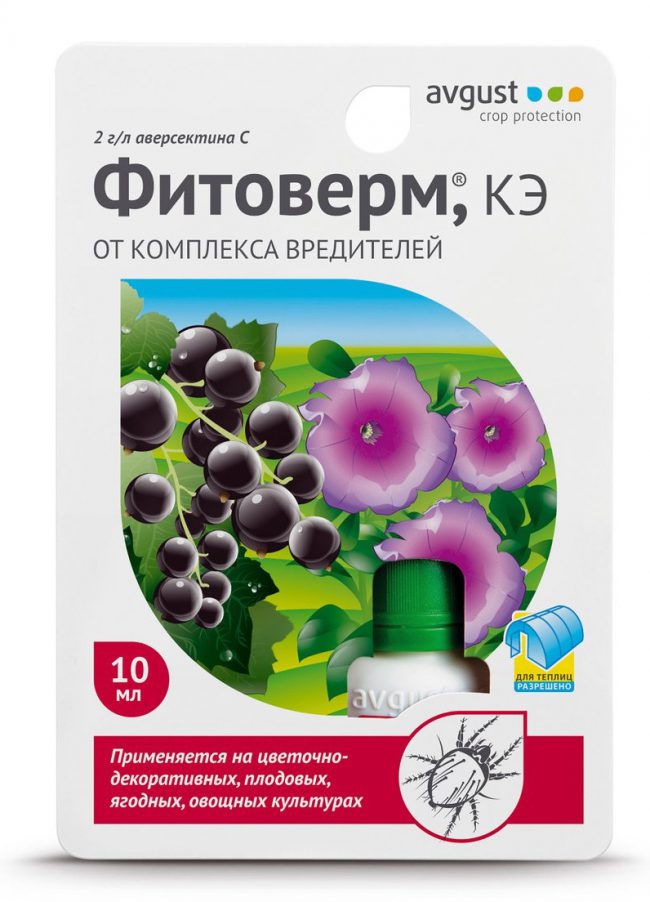
Fitoverm effective against different types of mites and other pests colors (weevil, thrips, all kinds of aphids) and garden plants (Colorado potato beetle, cabbage white butterfly, cabbage Moth, spider mite, codling moth)
less popular, but no less effective are the following chemicals against pests:
- able to. Highly effective insecticide new generation, providing an enteric-contact action. The protective effect lasts 40-50 days. Suitable for regular use, because it is not addictive. economically expended. Compatible with growth regulators, pesticides, insekticidami and fungicidami. The protective effect persists for 14-28 days, when applied to the soil - 45-60 days.
- Apollo. contact acaricide, exerting a hormonal effect on the eggs and spider mites on the earlier stages of development, for adults means ineffective. It is allowed to be mixed with fungicides and insecticides. Apollo is a safety advantage in relation to bees and beneficial insects.
- Demitan. Acaricide based phenazaquin. It has contact action. The protective effect persists for 45 days. Demitan has a low application rate.
- Karate. Contact insecticide broad spectrum. Active component acts as lambda-cyhalothrin. Effective against gall mites.
- Neoron. Reliable contact acaricide. The active ingredient in it is brompropilat. The protective effect lasts 30-45 days. Safe for beneficial insects. Well tolerated by plants. Sovmestim with mnogimi insekticidami and fungicidami.
- Nissoran. Effective and safe hormonal drug based on hexythiazox. It provides enteric-contact action on the different types of ticks. Not addictive and develop immunity pests. Detrimental effect on the parasites at all stages of development.
- enthrall. acaricide, reduce the number of populations of spider mites on any of the active stages of development. Different from other chemicals, resistant to sunlight and retains its protective properties with long-term light.
- Tulsa. Insektoakaricid, providing contact-intestinal action. As soon as possible pests paralyzes the nervous system and stops their nutritional function. Protection period - 14 days.
- Envidor. acaricide, which violates the lipid metabolism. Provides contact and systemic action on pests all stages of development. It is highly resistant to precipitation. Maximum number of treatments - 2.
As deduce spider mite folk remedies
Destroy pests by using such folk remedies:
- Alder. take 100 g of fresh or dried leaves and pour 1 liters of water, boil for 30 minutes, then leave on 12 hours. Before processing, the infusion should be filtered.
- Dandelion. take 40 g roots or 60 g leaves and pour hot water, insist 3 o'clock, then strain.
- chamomile. mix 1 kg of dried camomile with 10 liters of water, heated up 60 °C. leave on 12-15 hours, filtered and diluted prior to use in 2-3 fold, add 50 g soap.
- Horseradish. join 150 g crushed horseradish and 1 liters of water, leave on 1 time, then filter.
- sorrel. grind 300 g sorrel roots and pour 10 l of hot water, insist 3-4 o'clock. Then filter and add 40 g soap.
- cyclamen. Cyclamen tubers are cut and cook for 45 minutes. Then cool the broth, drain and treat their plants. A second procedure should be carried out through 5 days.
- milfoil. mix 800 g of dried leaves and 10 l of boiling water. The solution is suitable for the treatment of indoor plants, and for greenhouse.
- potato tops. grind 1 kg of raw material and pour 10 liters of water. Insist 4 o'clock, then filter. This tool is suitable for the treatment of greenhouse plants.
- Sagebrush. It is struggling not only with the spider mites, but and other parasites. On 10 liters of water need 800 g of dry raw material. Infuse means 2 day, then boil, filter and add another 10 liters of water.
- purity. take 400 g fresh or 100 g of dry raw material and pour 1 l of boiling water. leave on 1 day.
- Pepper. Add 50 g cayenne pepper 500 ml of water.
- A tomato. join 60 g of crushed dried leaves and tomatoes 1 liters of water, leave on 3 o'clock.
- Garlic. grind 30 g garlic cloves and mix with 1 liters of water. Strain and process plants.
- Bow. Cut in small pieces 1 large onion and pour 500 ml warm water purified. Insist 6 hours in a closed container.
- rubbing alcohol. Gently rub the leaves 96% alcohol. You can combine alcohol with acetone. Ingredients should be taken in proportion 2:1. The resulting mixture should be completely immerse the plant before transplanting, thoroughly clean the root system from the old substrate.
- Ammonia. Add 30 ml of ammonia in 10 liters of water and mix well. The resulting mixture should be cleaned leaves.
- Soap. To prepare a solution suitable tar, economic or green soap. Mixing soap and water should be treated, not only damaged plants, but pot. The foam should be left on the leaves on 3 o'clock, then wash it off and cover with a day plant with a plastic bag for the greenhouse effect.
- Rosemary essential oil. Add 3-5 Oil drops in 1 liters of water, stir thoroughly and wipe houseplants.
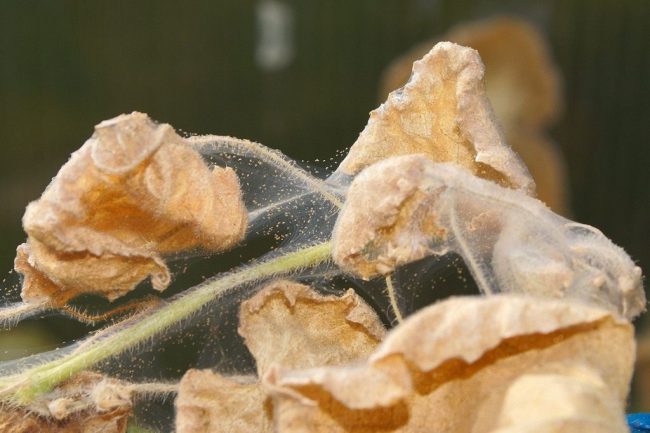
How to treat house plants correctly?
In processing plants against spider mites should consider such recommendations florist:
- Spray not only damaged plants, but other colors, adjoining.
- Remove all infected leaves and burn.
- Rinse the leaves with soapy water and rinse thoroughly under the shower.
- disinfect trays, leaving them for a while in boiling water.
- Process leaves the selected tool and add it to the ground.
- put on 2 days to flower bag. The plant should not be located under direct sunlight.
- For the complete destruction of ticks carry out processing 2 times with a break in 6 days.
note! Before treatment, the color should be washed with hot water and the sill of the frame with the addition of any detergent.
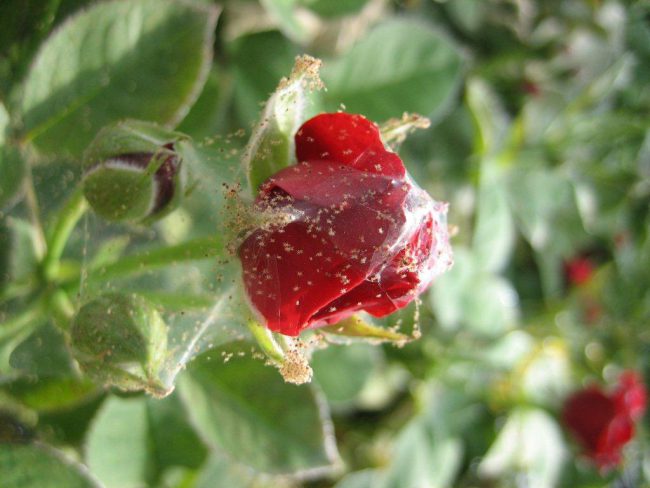
prevention
To avoid the appearance of spider mites on houseplants, it is recommended to observe the following rules:
- Regularly inspect all colors and wipe the dust.
- Maintain an optimal level of humidity in the room.
- Daily spray the leaves with an atomizer.
- Irrigate plants every month under warm water.
- Recently purchased flowers quarantine.
- Steamed soil to kill pests, hibernating.
For prevention it is also helpful to use Neem oil. It is well tolerated by many plants. The curative component contains oil, against which the pests can not develop immunity.






